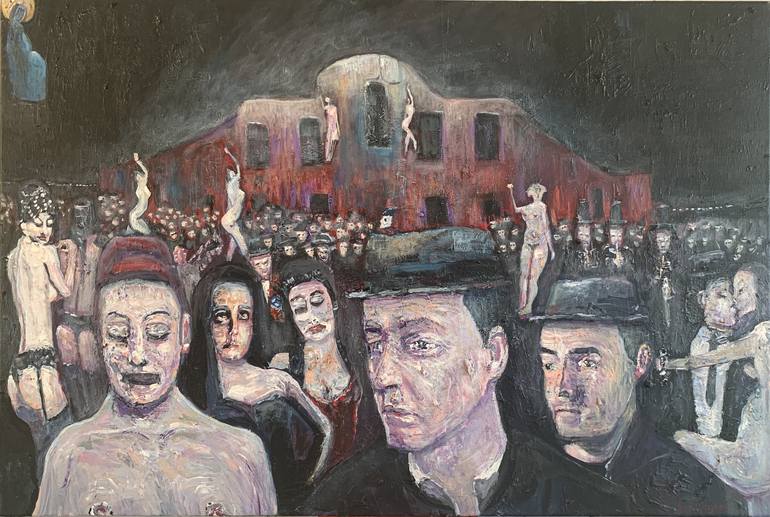







VIEW IN MY ROOM
Hell Fire Club, Dublin: Redemption from the Desolation of Souls Painting
Ireland
Painting, Acrylic on Canvas
Size: 30 W x 20 H x 1 D in
Ships in a Box
About The Artwork
Growing up in Dublin you would hear tales of the historic Hell Fire Club which according to legend was a club founded in the early 1700s by members suspected of dabbling in the occult. The membership typically included young aristocrats and members of the the club were accused of partaking in drunken orgies, gambling, murder, human sacrifice and devil worship. The story goes that members of that organisation would meet at a secluded hunting lodge in the Dublin Mountains. The Club is long since a thing of memory, and the lodge is long derelict, but its legend lives on.
Details & Dimensions
Painting:Acrylic on Canvas
Original:One-of-a-kind Artwork
Size:30 W x 20 H x 1 D in
Frame:Not Framed
Ready to Hang:Not applicable
Packaging:Ships in a Box
Shipping & Returns
Delivery Time:Typically 5-7 business days for domestic shipments, 10-14 business days for international shipments.
Handling:Ships in a box. Artists are responsible for packaging and adhering to Saatchi Art’s packaging guidelines.
Ships From:Ireland.
Have additional questions?
Please visit our help section or contact us.
Ireland
I’m a self-taught artist, living in Cork, Ireland.
Thousands Of Five-Star Reviews
We deliver world-class customer service to all of our art buyers.
Global Selection
Explore an unparalleled artwork selection by artists from around the world.
Satisfaction Guaranteed
Our 14-day satisfaction guarantee allows you to buy with confidence.
Support An Artist With Every Purchase
We pay our artists more on every sale than other galleries.
Need More Help?